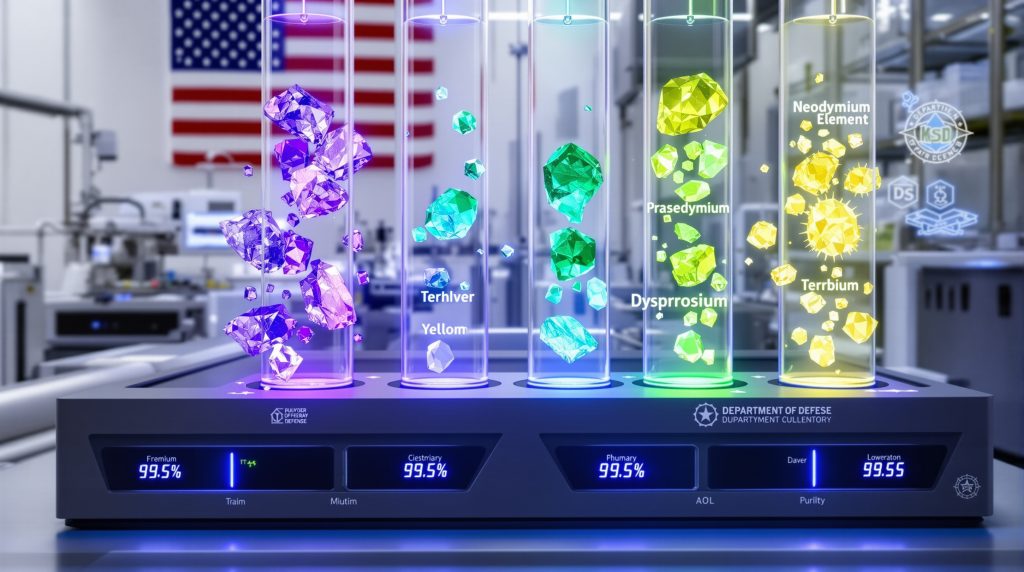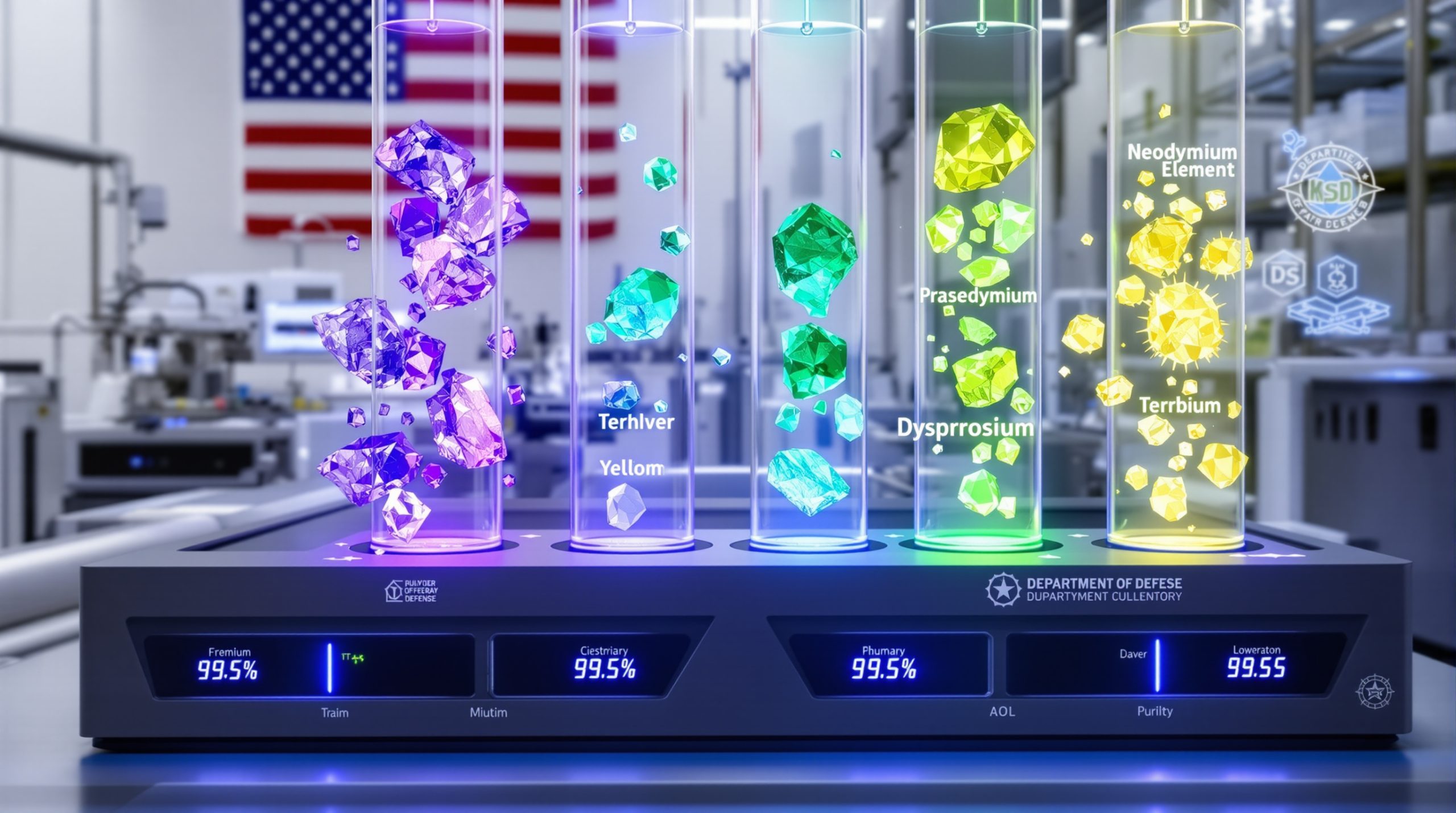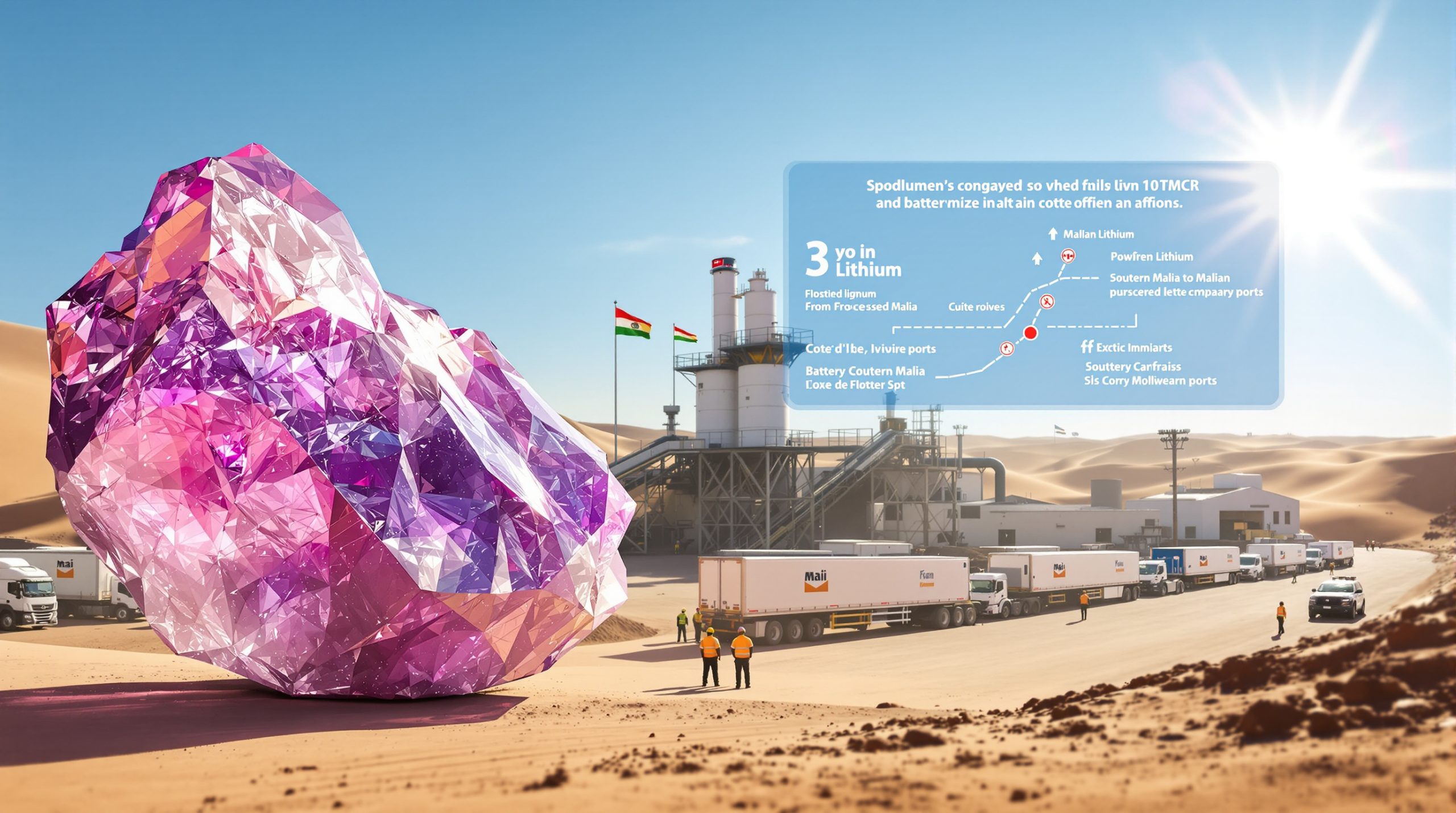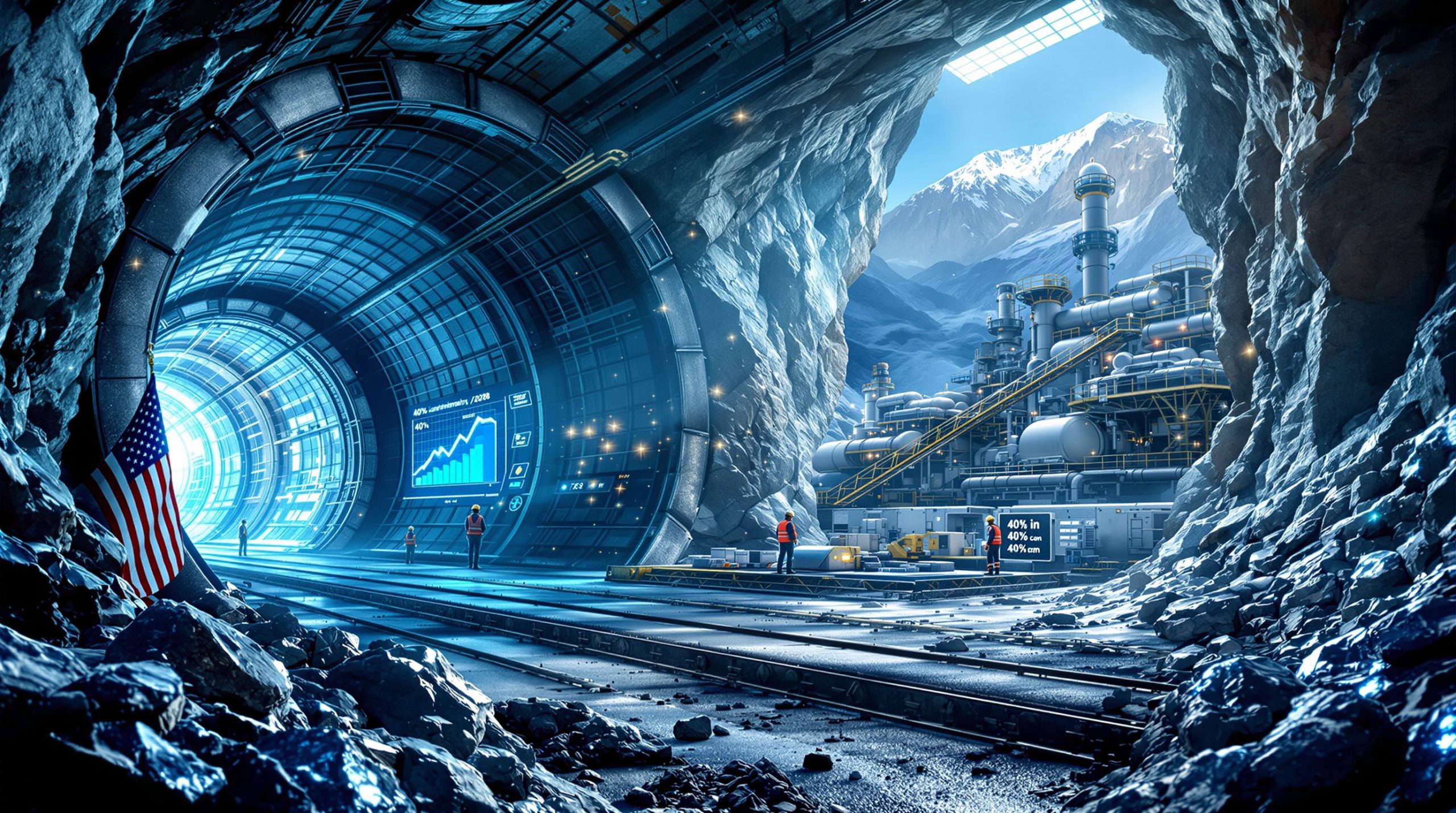US DoD Invests $2M in ReElement's Domestic Rare Earth Refining: Strengthening National Security
ReElement Technologies has secured $2 million in funding from the United States Department of Defense (DoD) to enhance domestic rare earth element (REE) refining capabilities. This strategic investment aims to reduce America's dependence on foreign sources for these critical minerals energy security while bolstering national security through supply chain resilience.
The funding, provided through the DoD's Office of the Assistant Secretary of Defense for Industrial Base Policy's Industrial Base Analysis and Sustainment Program, represents a significant step toward establishing a complete domestic "mine-to-magnet" supply chain by 2027.
Understanding the Strategic Importance of Rare Earth Elements
Rare earth elements play a crucial role in defense applications, particularly in the production of advanced magnets essential for military hardware and systems. Despite their name, REEs are relatively abundant in the Earth's crust but rarely found in concentrated deposits that make extraction economically viable.
Elements like neodymium, praseodymium, dysprosium, and terbium are critical components in these specialized magnets, making them strategically vital for national security. These elements enable the miniaturization of electronics while maintaining powerful magnetic properties necessary for advanced weapons systems, communications equipment, and other defense technologies.
The United States currently faces a significant vulnerability in its REE supply chain, with heavy dependence on imports for processed materials—particularly from China, which dominates global processing capacity. This vulnerability has prompted a renewed focus on the defence-critical materials strategy across many Western nations.
What Makes ReElement's Technology Revolutionary?
Chromatographic Separation: A Game-Changing Approach
ReElement's platform utilizes advanced chromatographic separation methods rather than traditional solvent extraction techniques. This innovative approach marks a fundamental shift in rare earth processing technology.
Traditional rare earth separation has relied on solvent extraction—a chemical-intensive process requiring multiple stages, large volumes of harsh chemicals, and generating significant waste. In contrast, ReElement's chromatographic technology offers several groundbreaking advantages:
- Ability to achieve purity levels exceeding 99.5% for critical rare earth oxides, with capabilities reaching 99.999% for specialized applications
- Processing flexibility that handles multiple feedstock types including both virgin ores and recycled materials
- Significantly reduced environmental impact compared to conventional methods
- Lower energy consumption and water usage than traditional processes
- Faster processing times and higher throughput rates
This technological shift represents one of the most significant advances in rare earth processing in decades, offering new raw materials facility insights for countries seeking to secure their supply chains.
From Pharmaceuticals to Critical Minerals
The technology behind ReElement's platform has fascinating origins that highlight cross-industry innovation:
- Initially developed at Purdue University for pharmaceutical purification
- Adapted and optimized specifically for rare earth element separation
- Now deployed at a dedicated 42-acre refining campus in Marion, Indiana
This technology transfer story demonstrates how innovations from one industry can be successfully applied to solve critical challenges in another. The pharmaceutical industry's need for ultra-high purity compounds drove the development of chromatographic techniques that, with adaptation, proved ideal for solving the persistent challenges of rare earth separation.
Why is the DoD Investing in Domestic Rare Earth Refining?
Building Supply Chain Resilience
The DoD funding is part of a broader initiative to establish a complete "mine-to-magnet" domestic supply chain by 2027. This investment specifically addresses the critical middle stage of rare earth processing:
- Mining (upstream): Extraction of raw materials
- Refining (midstream): Separation and purification of individual elements
- Manufacturing (downstream): Production of magnets and components
This "missing middle" has long been the most vulnerable link in America's rare earth supply chain. While some domestic mining and manufacturing capacity exists, the refining stage has been predominantly controlled by foreign entities, creating a critical bottleneck.
Reducing Foreign Dependency
The United States currently relies heavily on imports for processed rare earth materials. This dependency creates multiple challenges:
- National security vulnerabilities that could be exploited during conflicts
- Supply chain risks during global disruptions (as demonstrated during recent pandemics)
- Strategic disadvantages in critical technology development
- Reduced economic competitiveness in high-tech manufacturing
According to the U.S. Geological Survey, China has historically controlled approximately 85% of global rare earth processing capacity. This dominance has allowed China to leverage its position for geopolitical advantage, including past export restrictions that sent global prices soaring.
What Capabilities Does ReElement's Platform Offer?
Modular and Scalable Design
ReElement's refining platform features a modular design that provides several key advantages:
- Rapid deployment capabilities that allow new capacity to come online quickly
- Scalability to meet varying production demands as market needs evolve
- Flexibility to process different feedstock types, enabling sourcing diversity
- Ability to expand incrementally without massive upfront capital investments
This modular approach contrasts sharply with traditional rare earth processing facilities, which typically require large, fixed installations with limited flexibility to adapt to changing market conditions or technological developments.
Multi-Mineral Processing Capacity
The platform can effectively separate and purify a wide range of critical materials:
- Light rare earth elements (LREEs) such as neodymium and praseodymium
- Heavy rare earth elements (HREEs) including dysprosium and terbium
- Other critical minerals essential for defense and clean energy applications
This multi-mineral capability is particularly valuable as different defense systems require various combinations of elements, and a diverse processing capability enhances supply chain resilience. Many countries are now considering establishing a critical minerals reserve to mitigate supply chain risks.
Environmental and Efficiency Benefits
Compared to traditional refining methods, ReElement's technology offers substantial improvements across multiple performance metrics:
| Factor | Traditional Methods | ReElement's Platform |
|---|---|---|
| Purity Levels | Variable, often requiring multiple passes | 99.5%+ in a single process |
| Waste Generation | Significant chemical waste | Substantially reduced waste stream |
| Processing Efficiency | Time and resource-intensive | Higher throughput, lower resource consumption |
| Environmental Impact | High water usage, chemical discharge | Minimal environmental footprint |
| Energy Requirements | Energy-intensive | Lower energy consumption per unit produced |
| Land Footprint | Extensive settling ponds and storage | Compact processing facilities |
These environmental advantages align with both DoD sustainability initiatives and broader U.S. environmental policy goals, making the technology doubly valuable from a policy perspective.
How Will This Impact the US Rare Earth Supply Chain?
Addressing the "Missing Middle"
The U.S. rare earth supply chain has historically suffered from a lack of domestic refining capacity—the critical "middle" stage between mining and magnet manufacturing. ReElement's technology helps bridge this gap by:
- Providing domestic refining capabilities for both virgin and recycled materials
- Creating a circular economy approach to rare earth utilization
- Establishing technical expertise within the United States
- Reducing the approximately 8-12 month timeline typically required to ship materials overseas for processing and return
This missing link has been a primary strategic vulnerability, as even domestically mined rare earth materials often had to be shipped overseas for processing before returning for manufacturing into end products.
Supporting Defense Industry Requirements
The platform specifically addresses defense industry needs by:
- Producing high-purity materials required for military applications
- Ensuring consistent quality that meets stringent specifications
- Creating supply chain transparency and traceability
- Reducing lead times for critical materials
Defense contractors require reliable access to high-purity rare earth materials to maintain production schedules for advanced systems. Domestic processing reduces uncertainty and potential disruptions in these supply chains.
What's Next for Domestic Rare Earth Processing?
Expanding Production Capacity
With DoD support, ReElement plans to:
- Scale up production capabilities at its Indiana facility
- Increase the range of rare earth elements processed
- Develop additional purification techniques for specialized applications
- Potentially establish satellite facilities near key mining or manufacturing hubs
This expansion will help create a more robust domestic ecosystem for rare earth processing and utilization, potentially creating a model for other critical material supply chains.
Creating a Circular Rare Earth Economy
The platform's ability to process recycled materials opens possibilities for:
- Reclaiming rare earths from end-of-life products including wind turbines, electric vehicles, and electronics
- Reducing dependence on new mining operations
- Creating more sustainable supply chains with lower environmental impacts
- Establishing the U.S. as a leader in critical material recycling
This recycling capability is particularly significant given that rare earth magnets from older products often contain higher concentrations of certain elements than newly mined materials, potentially making them more valuable as a feedstock. The approach aligns with emerging mining innovation trends focusing on sustainability and circular economy principles.
What Are the Broader Implications for Critical Mineral Security?
Template for Other Critical Minerals
The ReElement model could serve as a template for securing other critical mineral supply chains:
- Applying similar technology to battery materials like lithium, cobalt, and nickel
- Developing processing capabilities for strategic metals like gallium and germanium
- Creating integrated domestic supply chains for multiple critical materials
- Establishing processing hubs that can handle diverse feedstocks
The lessons learned from establishing this rare earth processing capability could inform strategies for securing other materials deemed critical to national security and economic prosperity.
Economic and Strategic Benefits
Beyond national security, domestic rare earth refining offers multiple benefits:
- Job creation in advanced manufacturing and technical fields
- Technological leadership in critical materials processing
- Reduced vulnerability to international supply disruptions
- Potential export opportunities as allied nations seek secure supply chains
- Development of intellectual property and expertise that strengthen America's competitive position
These benefits extend beyond the immediate military applications to include broader economic and technological advantages that support American leadership in advanced industries.
FAQ: US Rare Earth Refining and National Security
What are rare earth elements and why are they important?
Rare earth elements are a group of 17 metallic elements that, despite their name, are relatively abundant in the Earth's crust. They're crucial for many high-tech applications including powerful magnets used in defense systems, electric vehicles, wind turbines, and consumer electronics. Their unique electronic, optical, and magnetic properties make them irreplaceable in many advanced technologies.
Why does the US need domestic rare earth refining?
While the US has some rare earth mining operations, it lacks sufficient domestic capacity to separate and purify these elements—a critical step before they can be used in manufacturing. This creates dependency on foreign countries, particularly China, which dominates global rare earth processing. Domestic refining capacity reduces this vulnerability and shortens supply chains.
How does ReElement's technology differ from traditional methods?
Traditional rare earth separation uses solvent extraction—a chemical-intensive process requiring multiple stages, large amounts of water, and generating significant waste. ReElement's chromatographic approach achieves higher purity with less environmental impact, lower energy consumption, and reduced waste generation. It also offers greater flexibility in processing different feedstock types.
What role does recycling play in rare earth supply chains?
Recycling rare earth elements from end-of-life products can reduce dependency on mining while creating a more sustainable supply chain. ReElement's technology is designed to process both virgin and recycled materials, supporting circular economy principles. This dual-capability creates resilience by diversifying potential sources of critical materials.
How does this investment connect to broader US industrial policy?
This funding aligns with several US policy initiatives including the Defense Production Act, the Inflation Reduction Act, and broader efforts to strengthen domestic supply chains for critical minerals essential to clean energy and defense applications. It represents part of a whole-of-government approach to reducing dependencies on foreign sources for strategically important materials.
Disclaimer: This article contains forward-looking statements about industrial technologies and market developments. Future outcomes may differ from projections due to technological challenges, market conditions, regulatory changes, or other factors. Readers should consult with appropriate experts before making investment or policy decisions based on this information.
Ready to Stay Ahead of Critical Mineral Discoveries?
Don't miss out on the next major ASX mineral discovery – let Discovery Alert's proprietary Discovery IQ model instantly notify you of significant critical mineral announcements across the ASX. Explore why historic mineral discoveries can generate substantial returns by visiting the Discovery Alert discoveries page and position yourself ahead of the market.




